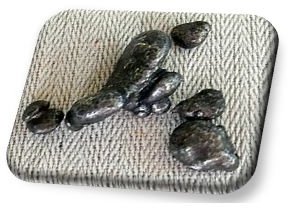Lead Pollution Effects: Its Sources & Control
What is Lead Pollution?
Lead pollution can be defined as the excessive use of lead materials that results in toxic emissions of lead gasses and particulate matters found in:
-
Atmospheric air carrying sulfur dioxide, carbon monoxide and abrasive metal dusts, as they are emitted by industries engaged in smelting lead metals during production;
-
Agricultural and urban soil that contains more than the naturally occurring lead levels of 10 to 20 part per million at the most. Spent washes of lead wastes released by lead reclamation factories and foundries are retained by the soil leading to excessive ppm measures. Industrial waste water containing fine lead, seeps into the soil and reaches ground water levels leading to water contamination.
-
There is ocean lead pollution as spent washes are carried by water run-offs to irrigation canals, streams and eventually rivers where they will flow into estuaries and eventually to the sea.
-
Lead as a pollutant has detrimental effects to human health, as it can cause serious damage to the digestive and nervous systems. Although the use of lead has been discontinued in gasoline and in water pipes, its uses are still prevalent in almost all industries.
The most common sources of lead pollution in today’s environment, are manufacturing plants and industries that make wide use of lead in the production of paint, batteries, bearings, solders, seals and a wide range of electronic applications such as TV glass, TV tubes, ballasts, weights, foils, wires, crystal glass, X-ray and gamma radiations, sound proofing, shields, in civil constructions, in communications as well as in weapon ammunitions.
The US is said to be the largest producer and consumer of lead, particularly the most common of all lead ores—known as Galena.
When and Where Did the Use of Lead Originate?

Researchers have pored through endless artifacts and records, until they arrived at the conclusion that lead metal was an integral part of human civilizations, as they progressed through thousands of years.
Studies have shown that under the Roman Empire, lead was an important metal because of the ease and durability by which it could be used as construction material, particularly for water pipes in their plumbing systems. The chemical symbol Pb, stands for the Latin word “plumbum” which meant lead and that the words “plumbing system” refer to the intricate water pipe structures where water coming from reservoirs will pass through for distribution .
The vast use of lead in ancient human societies was wide placed since this metal was also used for glazing pottery, for inventing cosmetics and even for wine-making. In fact, Roman winemakers insisted on lining their copper pots and kettles with lead, not only for its sweetening effect but to throw-off the unpleasant taste of copper as well.
The Roman Empire was not the only civilization to have used lead, in as much as artifacts coming from earlier Turkish, Babylonian, Egyptian, Assyrian, Grecian and Chinese empires provided proof that lead was an important metal for their art and warfare. Soldered lead was used to fasten nuts and bolts that secured the main entrances to their fortresses, while armor, mallets and even fist knuckles were fashioned out of this versatile metal. (This is aside from their common uses similar to that of the Roman civilization.)
The Earliest Warnings about Lead-Related Health Risks

In the early years of research about lead and its health risks, the 18th century “age of industrialization” was initially considered as the starting point by which lead became overused, which led to lead pollution. Yet the findings of scholarly studies in later years revealed that lead, its overuse and resulting pollution was already evident even in the earliest ages of civilization. Here are some examples:
-
Vitruvius, a Roman architect of 14th BC Rome wrote his misgivings about lead in his book “De Architectura “. He warned about lead and how air was capable of carrying lead fumes and could enter the body of the workers through inhalations. These caused unexplained ailments physically manifested by pale bloodless complexions and limb paralysis. Thus, this architect made particular warnings about lead as unwholesome if to be used for water pipes.
-
Hippocrates, in his time of service as a Greek physician in 370 BC, described the ailments of metal workers as colic and often accompanied by upset stomachs. This was confirmed by Dioscorides, another Greek physician who existed in the 1st century AD.
-
In the 1600s, reports of paralysis, intestinal disorder, swelling and delirium attributed to lead exposure were already prevalent. It was also during this era that the French aristocrats took particular interest in lead for its poisonous qualities.
Please read on to the next page for the continuation of this section.
The Earliest Warnings about Lead-Related Health Risks (continued)

-
Benjamin Franklin, who was one of the proponents of industrial technology, also wrote his observations about lead and the health risks it presented to workers. He personally witnessed people suffering from “bellyaches” and loss of functional use of their hands and limbs, which he easily connected to the use of lead in the printing press he used to work for. Franklin was convinced about his assessment of the effects of lead that he vowed he will never use them in his own practice.
-
Scientists at the Health Research Institute in Naperville, Illinois, conducted a chemical analysis of Ludwig van Beethoven’s hair, to settle a long standing debate about the real cause of Beethoven’s mental illness. The composer’s poor health was due his digestive problems and abdominal pains, all these eventually led to his death. History has it that Beethoven was examined by more than 30 doctors who could not establish the root cause of his health problems. In year 2000, scientists at the Health Research Institute released a report of their chemical analysis, which showed evidence that Beethoven died of lead poisoning.
Preventive Control and Solutions against Lead Pollution

In Industrial Sites
-
Lead smelting plants should design their storage piles in such a way that the movements of lead materials are minimized to lessen exposure to wind and air. Storage piles susceptible to dusting are treated with dust suppression techniques. The latter should also be applied on paved roadways along with periodic cleaning of areas surrounding the industrial site.
-
Fixed conveyors, rail cars and rail dampers in all transfer points should be enclosed using dry-type dust collecting materials and design.
-
Waste water run-offs should be contained in storage piles with built-in catchment drainage to retain and collect the sediments. After which, dust suppression liquids will solidify the waste for recycling or proper disposal, but will be subjected to further treatments in order to prevent soil and water contamination.
For Tap Water
-
Incidents of lead contamination in tap water are also possible and known preventive solutions to eliminate lead contamination include reverse osmosis, distillation and filtration using carbon filters specifically manufactured for lead removal.
-
Still, it is highly recommended for homeowners to get in touch with their local health departments to determine the correct remedial procedures that entail removing or treating the main source of lead contamination.
For Agricultural & Garden Soil
-
To minimize plant absorption of lead content in garden and agricultural soil, it is recommended to maintain the soil pH levels at 6.5. Another method is by adding organic matter, like composted leaves, non-acid peat and decomposed manure, because lead contents tend to bind with organic compounds.
-
Make sure that pH levels of organic compounds are likewise maintained at 6.5 and that the mulch used does not come potential sources of lead contamination.like city streets or highways, where there are large concentrations of vehicular traffic.
-
Gardeners and farmers are advised to base the bare soil standards established by the Minnesota State Legislature placed at 100 ppm as opposed to 300 ppm standard recommended by the Environmental Protection Agency (EPA).
-
In addition, the Minnesota State Legislature warns that households whose garden soil are tested to contain more than 100 ppm of lead content, should submit any child member under the age of six for blood lead testing.
-
However, while treatments and remediation techniques have resulted in increased production costs, some companies are using aluminum, tin, iron and plastics as alternative replacements for lead in construction materials, packaging and for containers.
In Homes
-
Lead pollution can be anywhere; in fact low cost housing projects were recently discovered as sources of lead pollution, as houses were covered with paint containing high lead content. Unknowing occupants who had family members below six years old were surprised at the results of the blood lead concentration in their children.
-
If you’re transferring to a new home, it would be best to have your new home checked, tested and inspected not only for lead pollution but for other known polluting substances as well.
Reference Materials & Image Credit Section
- Lead pollution causes and prevention -page 170By Roy M. Harrison, D. P. H. Laxen- Retrieved from https://books.google.com.ph/books?id=YrgOAAAAQAAJ&printsec=frontcover&dq=What+is+lead+pollution;+its+causes+and+prevention&source=bl&ots=b3BgdIRVyX&sig=1OOPZrP5hgpc8g1fNPXR6BWGSQ4&hl=en&ei=ADG2TIXhHIuWvAPo_ayTCQ&sa=X&oi=book_result&ct=result&resnum=1&ved=0CBUQ6AEwAA#v=onepage&q&f=false
- Occupational, industrial, and environmental toxicology By Michael I. Greenberg; p.391-392 https://books.google.com.ph/books?id=NnZ23IqU4SoC&pg=PA391&lpg=PA391&dq=what+kind+of+toxic+gasses+emanate+from+lead+fumes&source=bl&ots=DfgpvUFII5&sig=mV3KzjwqYvseXacsGikhMhmKMOI&hl=en&ei=KYS2TKyMGoPCvQP_lvzrBw&sa=X&oi=book_result&ct=result&resnum=4&ved=0CCQQ6AEwAw#v=onepage&q&f=false
- Dartmouth Toxic Metals Research Program Lead: Versatile Metal, Long Legacy –https://www.dartmouth.edu/~toxmetal/metals/stories/lead.html
RF Images: Wikimedia Commons
